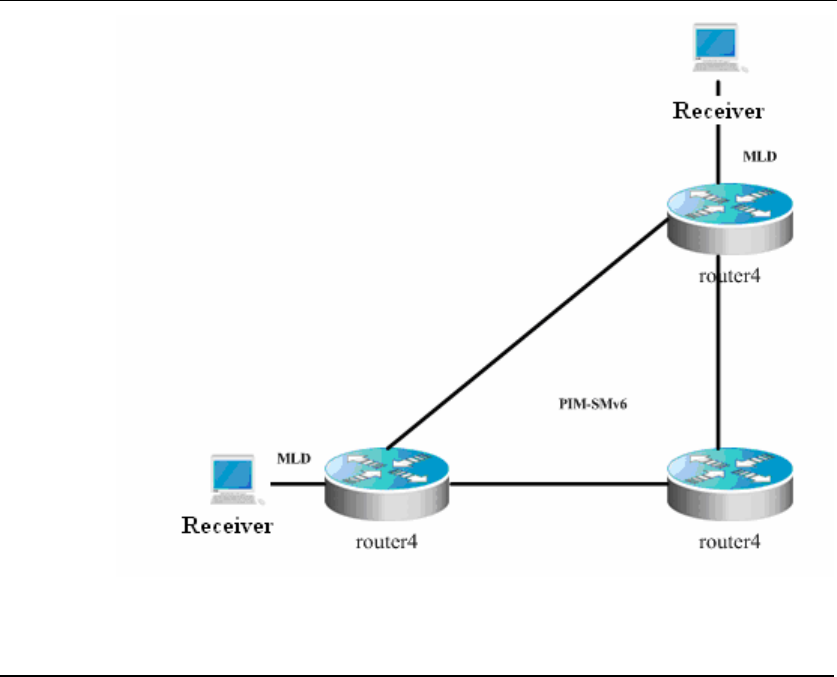
DES-7200 Configuration Guide Chapter 2 IPv6 Multicast
Configuration
2-2
Figure 1 Multicast protocols used in
IPv6 multicast environment
2.1.2 RPF Rule
The RPF(Reverse Path Forwarding) check mechanism is used to create the
multicast routing entries according to the current unicast routing information,
MBGP routing or multicast static routing to ensure the multicast data transmit
along the correct path and avoid the various loops.
The following explains the detailed process of searching for the unicast routing
table, MBGP routing table and multicast static routing table when using the RPF
mechanism:
First, select the best routings from the unicast routing table, MBGP routing table
and multicast static routing table respectively.
Select the best routing from the unicast routing table for the RPF check:
Search for the unicast routing table based on the IP address for the source packet
as the destination address, and select the best unicast routing.
If there is only one next-hop for this unicast routing, you shall check
whether the multicast has been enabled on the outbounding interface
for the next-hop routing.
If not, no unicast routing could be used for the RPF check;
If so, this unicast routing could be used for the RPF check and the
corresponding outbounding interface is the RPF interface.
If there are multiple next-hops for this unicast routing, all next-hops shall
be checked whether the multicast has been enabled on the outbounding
interface for the next-hop routing.
If not, it continues to check the next next-hop routing;
If so, this unicast routing could be used for the RPF check and the
corresponding outbounding interface is the RPF interface.
However, if the multicast function is not enabled on the outbounding
interface for all next-hops, no unicast routing could be used for the RPF
check.


















